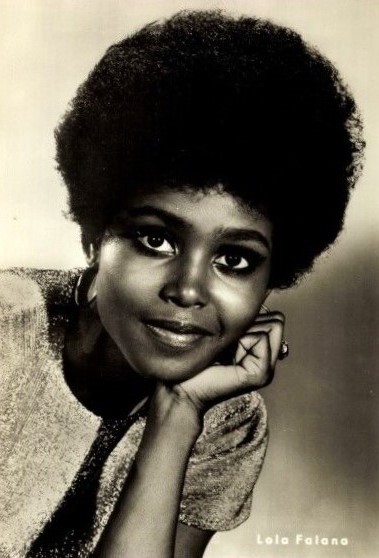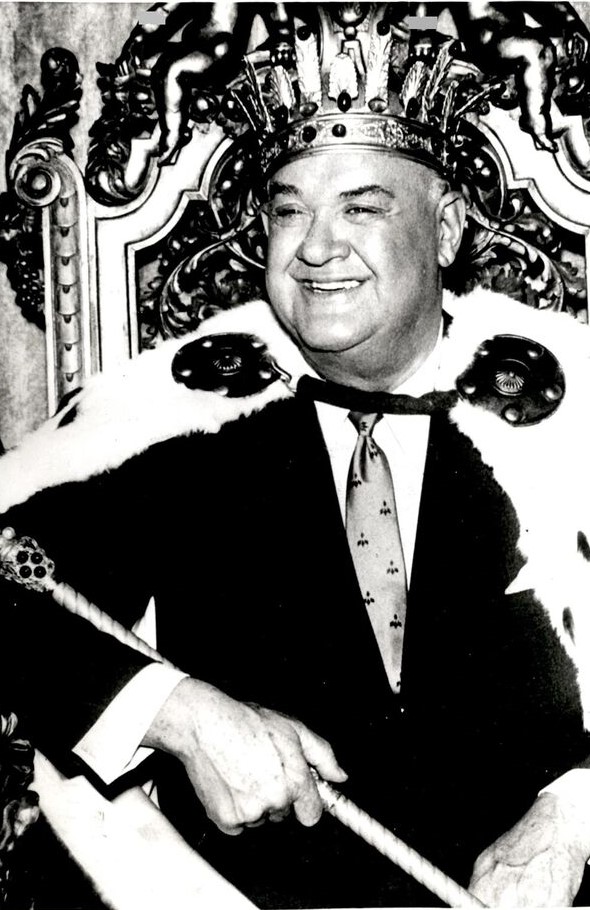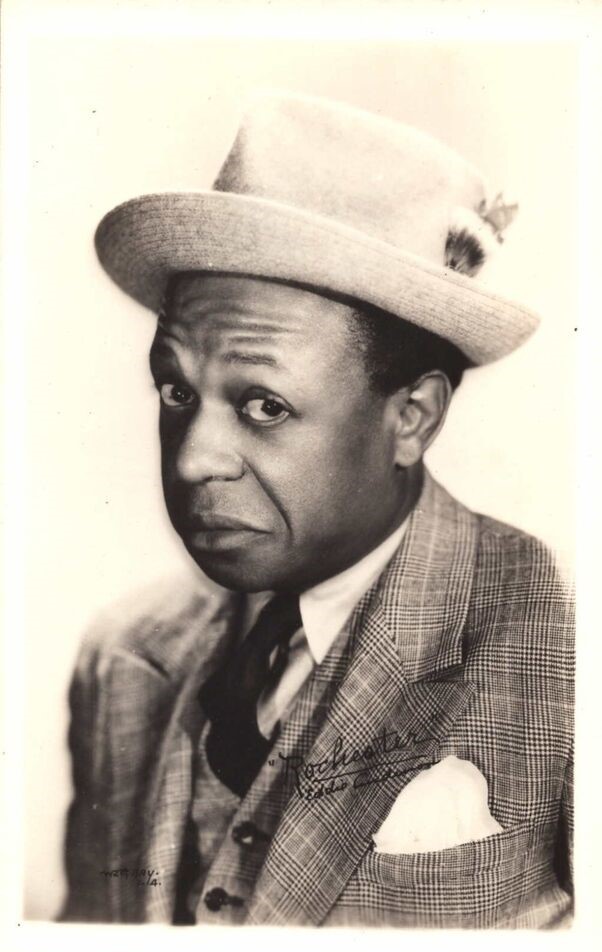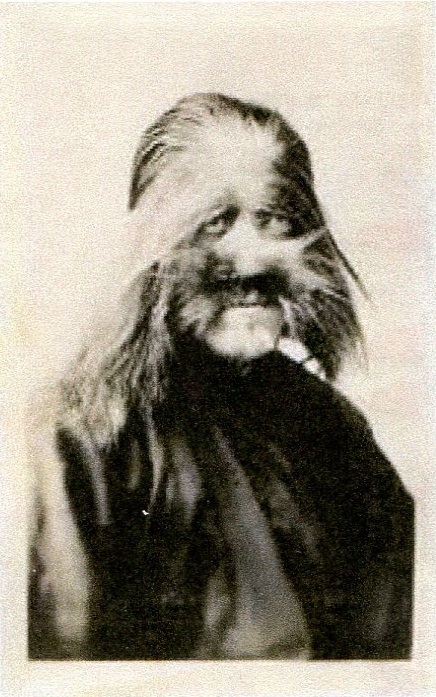Postcards of famous people have always been popular. In addition to historical figures, authors, and kings and queens, postcards celebrate favorite entertainers too.
Many actors and celebrities of the 1950s and ‘60s gave back to the world much more than they took. They broke barriers and created the base of today’s entertainment.

Danny Thomas
Everyone’s favorite “Make Room for Daddy” star was born Amos Muzyad Yakhoob Kairouz on January 6, 1912, on a horse farm in Deerfield, Michigan. He was one of ten children born to Lebanese immigrants. His parents were Maronite Catholic immigrants from Bsharri, Lebanon.
Thomas was raised in Toledo, Ohio, and attended Saint Francis de Sales Church, Woodward High School, and finally the University of Toledo.

Left: Advertising card from 1976 for the Celebrity Room at John Ascuaga’s Nugget in Reno, NV. Danny Thomas heads the bill, with singer and dancer Lola Falana sharing the stage. Right: arcade card showing Lola Falana, circa 1964.
Danny started out as a singer and then performed as an emcee and comedian in clubs. He launched his radio career in 1932. When he moved to Chicago, he didn’t want his family and friends to know that he’d gone back to the higher-paying club gigs. So he became known as Danny Thomas, combining the names of two of his brothers.
His early characters included Amos, the ne’er-do-well brother-in-law in radio’s “The Bickersons,” and Jerry Dingle, the mailman on “The Baby Snooks Show.” Danny starred in the 1952 movie “The Jazz Singer.”
“Make Room for Daddy,” also known as “The Danny Thomas Show,” produced by Desilu, was popular for its 13-year run from 1953 to 1965. Rusty Hamer played son Rusty, and Angela Cartwright played daughter Linda. The daddy-daughter chemistry between Danny and Linda made this show the hit that it was.
In addition to performing, Danny was a TV co-producer and often appeared in his shows’ cameos, such as the “Dick Van Dyke Show” (who can forget Kolak, the alien from the planet Twilo), “Andy Griffith Show,” “Mod Squad,” and “The Real McCoys.” He was responsible for Mary Tyler Moore getting the role of Laura Petrie on “The Dick Van Dyke Show,” launching her stardom.
At the beginning of his career, when getting a break in showbiz was a long shot, Danny vowed that if he became successful, he would open a shrine dedicated to St. Jude Thaddeus, the patron saint of hopeless causes. And, he made good on his promise, founding the St. Jude Research Hospital in Memphis, Tennessee, in 1962—a hospital where no child would be turned away. St. Jude is a prime research and treatment center for children with cancer and other life-threatening diseases.
President Ronald Reagan bestowed a Congressional Medal of Honor upon Danny for his work with the hospital.
Danny married Rose Marie Mantell, a radio singer, in 1936 and their three children followed in their show business footsteps. Marlo found success as TV’s “That Girl” and later married television talk show host Phil Donahue, while Tony is a TV producer and Terre is a singer-songwriter.
Danny was a 32nd-degree Mason, as well as a Noble in Al Malaikah Shrine. Always a devout Maronite Catholic, Danny was named a Knight Commander of the Order of the Holy Sepulcher by Pope Paul VI.
As one of the original owners of the Miami Dolphins football team and an avid golfer, Danny made his mark on sports as well, with two Professional Golf Association (PGA) tour events named in his honor. His autobiography, “Make Room for Danny,” was published in 1990.
In 1991, at the age of 79, Danny died of a heart attack at home in Beverly Hills and is interred on the grounds of St. Jude Hospital. In 2012, the U.S. Postal Service issued a first-class stamp honoring Danny Thomas as both an entertainer and a humanitarian.

Jack Benny and Mary Livingston
The world became a brighter place in 1894 when Benjamin Kubelsky (aka: Jack Benny) was born in Chicago. One of the most popular entertainers of the 1900s, Jack’s character was a miser, forever age 39, who played his screeching violin badly. In real life, he was an excellent violinist—a career his parents dreamed he would pursue.
Known for his comic timing, Jack used pauses and single-word expressions such as his famous exasperated “Well!” to flesh out his unforgettable persona and get big laughs. He starred in vaudeville, radio, movies, and television and was even caricaturized in cartoons.
At 14 years old, Jack played the violin in dance bands. He was a poor student who was expelled from high school and didn’t do much better in business school or working for his father’s haberdashery. At 17, he was playing vaudeville for $7.50 per week. He joined the U.S. Navy during World War I and entertained the troops with his violin and comedy routines.
In 1922 Jack went to Zeppo Marx’s family Passover Seder in Vancouver, British Columbia, Canada, where he met Zeppo’s cousin, Sadye, who was working in the hosiery section of the May Company. They married in 1927, and she turned out to be a natural comedienne. Sadye changed her name to Mary Livingston and collaborated with Jack throughout his career. They adopted a daughter, Joan, who later edited and published Jack’s autobiography.
In 1932, Jack Benny became a hit with his weekly radio show, “The Jack Benny Program.” His popular TV show of the same name ran from 1950 to 1965, evolving from a variety show to a sitcom. He was known for attracting guests who rarely appeared on television such as Marilyn Monroe, Humphrey Bogart, and Walt Disney.
 |  |
Jack’s character was everything he was not—vain, petty, self-aggrandizing and as a skinflint. His co-stars got laughs at the expense of his flaws. In spite of her lifelong bout with stage fright, Mary played his assertive female friend, Dorothy. Tenor Dennis Day always sang, the rotund Don Wilson was teased about his size and Eddie Anderson played Jack’s valet-chauffeur. “Oh, Rochester,” Jack would call—and Rochester would in his unforgettable gravelly voice would answer, “Yes, Boss?”
 |  |
The show allowed Eddie to break racial barriers as a regular cast member who was treated more like a partner than hired help. Jack paid particular attention to racial equality, and during World War II often praised the diversity of U.S. troops. He refused to allow racial-stereotype jokes on his show and went out of his way to give guest-starring roles to African American performers like Louis Armstrong and The Ink Spots.
Jack was noted for his long pauses and his defining joke: In a famous exchange, a mugger asks, “Your money or your life?” After a very long pause, Jack’s notoriously cheap character responds, “I’m thinking it over.”
His longtime friends included the Marx brothers, Frank Sinatra, James Stewart, Judy Garland, Barbara Stanwyck, Bing Crosby, Gracie Allen and his closest friend, George Burns.
After he officially retired, Jack did standup comedy and cameo appearances in films and hosted roasts for Ronald Reagan, Johnny Carson, Bob Hope, and Lucille Ball (his last public performance). Jack was roasted, himself, soon before his death from pancreatic cancer in 1974 at the age of 80. In his will, he had arranged to have a single red rose sent to Mary every day after he was gone.
Benny’s family donated Jack’s papers and a collection of his television shows to UCLA, and the university honored him by instituting the Jack Benny Award to recognize outstanding people in comedy. His Stradivarius violin was donated to the Los Angeles Philharmonic Orchestra.
***
Dear Reader,
Please return to Postcardhistory.net
on Thursday of this week for
Part II.

I’m going to dig out the ‘Old Stars’ now – thanks for the post –
Since I was fascinated by old cars as a kid, I will always remember that Jack Benny’s character drove a Maxwell. I learned just now that the sounds of the vehicle were recorded, but that one day the recording did not play Mel Blanc stepped in to make the noises, and his effort was received so well that “The Man of a Thousand Voices” added a new ongoing role to his repertoire.
Danny Thomas and Jack Benny were two of my favorites; though, until now, I never thought of hunting for them on postcards or arcade cards. Thank you for the article.
Younger people reading this, who don’t remember Jack Benny’s voice, aren’t going to laugh like I did! His delivery was one of a kind.